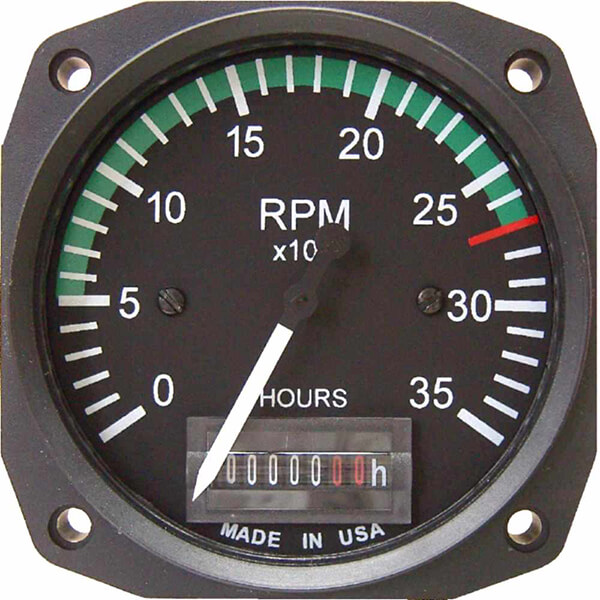The Significance of a Tachometer in Checking Engine Speed and Efficiency in Automotive Applications
In the realm of automobile engineering, the tachometer stands as a critical instrument in the motorist's collection, giving a direct window into the inner workings of a car's engine. Beyond its function as a mere gauge of transformations per minute (RPM), the tachometer serves as a vital device for fanatics and specialists alike, supplying real-time understandings right into engine efficiency and wellness.
Relevance of Monitoring Engine RPM
Monitoring engine RPM, or changes per minute, is a critical facet of automobile maintenance and efficiency assessment. Engine RPM straight correlates with the rate at which the engine's crankshaft turns, indicating just how rapidly the engine is running.
Moreover, monitoring engine RPM is vital for efficiency assessment in racing and high-performance cars. In recap, monitoring engine RPM is not only important for identifying issues however likewise for maximizing engine performance in various automobile applications.

Advantages of Real-Time Information
In automotive applications, real-time data plays an important function in supplying immediate understandings right into the efficiency and problem of the automobile. By continually checking numerous criteria such as engine rate, temperature level, gas usage, and a lot more, real-time data uses many benefits that contribute to enhanced efficiency and safety when driving.
One significant benefit of real-time information is its capability to alert chauffeurs and service technicians to any type of anomalies or issues without delay. This aggressive technique allows quick identification of possible troubles, permitting timely interventions to protect against more damage or break downs. Additionally, real-time information assists in performance optimization by giving prompt comments on driving habits and engine performance. Motorists can adjust their actions in real-time based upon this information to attain much better fuel economic situation and extend the lifespan of their automobile.

In addition, real-time information plays an essential role in modern auto diagnostics, making it possible for specialists to promptly diagnose and attend to malfunctions. This causes lowered downtime, lower upkeep prices, and ultimately, enhanced total vehicle dependability and long life (tachometer). By harnessing the power of real-time data, auto stakeholders can make informed choices that Recommended Reading positively impact both the efficiency and long life of the vehicle
Influence On Equipment Shifts
The tachometer plays an important function in enhancing gear shifts by providing real-time engine speed data to the driver. When coming close to the redline on the tachometer, it signifies the vehicle driver to upshift to protect against over-revving the engine and creating prospective damage.
Furthermore, the tachometer aids in achieving smoother equipment changes, especially in hands-on transmissions. By keeping track of engine speed, vehicle drivers can implement equipment shifts at the optimal RPM array, lowering jerking motions and minimizing important source endure the transmission elements. This precision on duty adjustments not only enhances driving convenience however also adds to sustain efficiency.
Enhancing Gas Effectiveness
Given the critical duty the tachometer plays in enhancing gear changes for performance and engine health and wellness, it directly adds to optimizing fuel performance in automobile applications. By providing real-time comments on engine speed, the tachometer aids chauffeurs in keeping the most reliable RPM variety for gas economic climate. When chauffeurs constantly keep an eye on the tachometer and change their driving practices as necessary, they can stay clear of unneeded fuel usage brought on by over-revving or carrying the engine.
Moreover, the tachometer assists vehicle drivers determine one of the most fuel-efficient gear to be in at any type of provided moment, stopping the engine from functioning more difficult than essential. This is particularly critical during acceleration and travelling, where remaining in the best equipment can substantially influence fuel effectiveness. In addition, the tachometer can alert chauffeurs to possible mechanical concerns that could be negatively impacting gas economy, such as a slipping clutch or a stopped up air filter. To conclude, the tachometer functions as an important tool in improving gas performance by advertising optimal driving habits and determining areas for enhancement in the automobile's efficiency.

Making Best Use Of Engine Long Life
The tachometer's duty in keeping track of engine rate and performance is crucial in guaranteeing the long life of automobile engines. Checking the tachometer enables drivers to stay within the advised RPM range for their automobile, preventing unneeded strain on the engine and expanding its life-span.

Final Thought
Finally, the tachometer plays a vital role in checking engine speed and efficiency in automobile applications. By these details giving real-time data on RPM, it enables effective equipment shifts, improved fuel effectiveness, and made the most of engine long life. This tool is necessary for maintaining ideal engine efficiency and guaranteeing the general functionality of a car.
Comments on “Tachometer Fundamentals: Whatever You Need to Know for Accurate Readings”